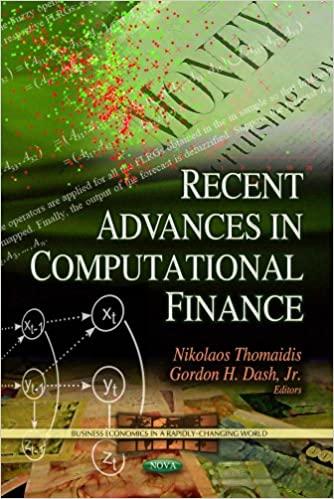Question
WACC, NPV, OCF and CFFA. The following is a set of financial statements for Acme Corporation . The target capital structure for Acme is 60%
WACC, NPV, OCF and CFFA.
The following is a set of financial statements for Acme Corporation.

The target capital structure for Acme is 60% debt and 40% equity. The risk-free rate is 2%. The market risk premium is 5%. The beta of Acme against a relevant stock index is 0.8. The pre-tax cost of debt for Acme is 4%. Assume an effective corporation tax of 17%.

Sales is expected to increase 15% per year from the new machine project.
Working capital at the beginning of a given year is 20% of sales for that year, allocated at the beginning of the project and recouped at the end of project life.
Depreciation uses straight line method and reduces the machine salvage value to zero over its useful life.
The CFO is confident of this project and expects the company-wide dividends to grow at the same rate as the sales growth of this new project for the next 3 years before reverting to a constant perpetual rate of 4%.
Question 1:
(a) Calculate the cost of equity capital using the CAPM model.
(b) Calculate WACC.
(c) Calculate the initial investment as of 1 January 2019.
(d) Calculate the annual after-tax cash flows (illustrate your calculations for the years ending 2019, 2020, and 2021).
(e) Calculate the terminal cash flow in 2021.
(f) Calculate NPV of the project as of 1 January 2019 considering that it will be financed using the same capital structure as the company.
(g) Recommend whether the project should be undertaken.
Financial Statements for Acme Corporation in thousands, except for Per-Share Data) Year Ended 31-Dec 2017 2018 190292 560 600 410 440 1.160 1,332 2,200 2,600 1900) 1,200) 1.300 1,400 2.460 2,732 Balance Sheet Assets Current assets Cash and equivalents Accounts receivable Inventory Total current assets Gross fixed assets Accumulated depreciation Net fixed assets Total assets Liabilities and shareholders' equity Current liabilities Accounts payable Notes payable Accrued taxes and expenses Total current liabilities Long-term debt Common stock Additional paid-in capital Retained earnings Total shareholders' equity Total liabilities and shareholders' equity Statement of Cash Flows Year Ended 31 December Operating activities Net income Adjustments Depreciation Changes in working capital Accounts receivable Inventories Accounts payable Accrued taxes and expenses Cash provided by operating activities Investing activities Purchases of fixed assets Cash used for investing activities Financing activities Notes payable Long-term financing issuances Common stock dividends Cash used for financing activities 300 250 140 625 700 865 100 890 100 200 200 670842 970 1,142 2.460 2,732 Cash and equivalents increase (decrease) Cash and equivalents at beginning of year Cash and equivalents at end of year Supplemental cash flow disclosures Interest paid Income taxes paid Statement of Income Year Ended 31 December 2018 3,000 2,200 800 300 500 Total sales Operating costs and expenses EBITDA Depreciation Operating income (EBIT) Interest expense Income before tax Taxes (at 17%) Net income Dividends Change in retained earnings Earnings per share (EPS) Dividends per share 400 68 332 160 172 $ 0.664 $ 0.320 $1,000,000 Data for new project under consideration Investment in new machinery Useful life of the machinery (years) Expected life of the project (years) Sales in the first year from new machine implementation COGS as a percentage of sales Estimated selling price at the the end of 3 years Additional working capital is 20% of sales attributed to new machine $800,000 70% $450,000 $160,000Step by Step Solution
There are 3 Steps involved in it
Step: 1

Get Instant Access to Expert-Tailored Solutions
See step-by-step solutions with expert insights and AI powered tools for academic success
Step: 2

Step: 3

Ace Your Homework with AI
Get the answers you need in no time with our AI-driven, step-by-step assistance
Get Started


